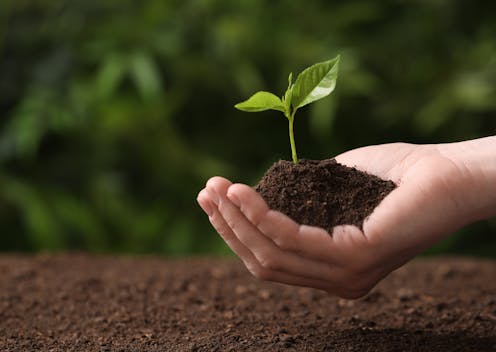
Despite expanding legislation and increasing popularity, sustainable death care options are still relatively unknown.
Some say this is because death and death care — services for burying and cremating the dead — are taboo topics, and so not openly discussed. Others maintain society discourages us from discussing death.
Recent data, however, shows that over half of the Americans surveyed would be interested in “green” or sustainable death care options. Sustainable death care is becoming a sought-after option, and its providers are quickly becoming a presence and a viable competitor in this industry.
An emerging phenomenon is the interest in and acceptance of sustainable death care options in tandem with the recent legalization of natural organic reduction (NOR) — or human composting — which is becoming legalized in parts of the United States.
What is human composting?
NOR is the process that turns the human body into soil. Popular media sometimes refers to this as “cradle to compost.” This movement is credited to have its genesis with the establishment of Recompose, a company founded in 2017 with a mission to provide a sustainable option for death care using NOR.
Human composting is becoming increasingly viewed as a legitimate option by consumers, particularly as it is gaining regulatory approval in the U.S. Washington state passed legislation in 2019, followed by Colorado and Oregon in 2021, Vermont and California in 2022, New York and Nevada in 2023, and Arizona, Maryland and Delaware in 2024. Bills are pending in Connecticut, Hawaii, Illinois, Maine, Massachusetts, Minnesota, New Jersey, New Hampshire, New Mexico, Oklahoma, Pennsylvania, Rhode Island, Utah and Virginia.
In Canada, human composting — while not yet legal — is also gaining popularity, and Canadians can now turn to Return Home, a Seattle-based company, for their human composting options.
Does saving the planet cost more?
Currently, death care services in the United States cost over US$7,800 for a funeral with interment, and around US$7,000 for cremation. Recompose charges around US$7,000 for its human composting process.
For those seeking sustainability, funerals have drawbacks, as they use chemicals for embalming that leach into the earth, and many use caskets that are resource-intensive and expensive. Burials require land for cemeteries which can be challenging in areas with limited space.
Cremations require intense energy use and can also emit harmful gases into the environment. It is estimated that cremations produce 573 pounds of carbon dioxide (CO2) per cremated body, and crematoriums account for approximately 360,000 metric tons of CO2 emissions in the U.S. annually.
Industry estimates project that NOR saves about one metric ton of CO2 compared to a traditional funeral and corpse disposition.
What do consumers want?
Consumer interest in sustainable death care is booming, with an estimated increase in online searches for sustainable options of over 71 per cent.
While some are clearly legitimizing sustainable death care options, there has also been backlash from religious organizations. For example, the Catholic church has indicated that it considers human composting disrespectful to the human body. Other opponents liken it to feeding humans to humans, referring to the cult movie Soylent Green, with others saying it is composting grandma.

Advocates of NOR, however, focus on the environmental benefits of reducing carbon footprint, leaching of harmful chemicals, resource intensity and pollution, as well as social benefits. For example, growing trees in the soil as memorials to loved ones.
The wider lack of information and the lack of sustainable options offered by the funeral industry is not stopping consumers from seeking out sustainable alternatives. So how do consumers seek out information when looking for sustainable death care options when there is so little information available to them? We found that consumers look to social media and the influence of others to explore and adopt sustainable death care.
Our research found that consumers look for online word of mouth to seek information and options. They are influenced by the comments of others. They also look to celebrity endorsements. For example, the leading company in sustainable death care, Recompose, has attracted high profile investors such as Margaret Atwood.
Archbishop Desmond Tutu’s body underwent alkaline hydrolysis or “water cremation,” where the body is immersed in a mixture of water and alkali. Actor Luke Perry was buried in a “mushroom suit” where the body is buried in organic cotton infused with mushroom mycelium and other microorganisms that speed up decomposition.
Another industry poised for shake up?
While consumers are pushing for sustainable death care options, our research has found that there is little momentum from the funeral industry to include increasing sustainable death care options.
It is no surprise that the current funeral industry, estimated to be worth over $20 billion in the U.S., might be resistant to change. Furthermore, consumers largely make decisions about death care services when grieving for family members, and thus are vulnerable to pushy sales tactics, upselling or confusing pricing for funeral services.
Whether the industry is ready or not, sustainable death care is predicted to become a billion dollar market and is poised to take over a large market share of the existing funeral industry.
The authors do not work for, consult, own shares in or receive funding from any company or organisation that would benefit from this article, and have disclosed no relevant affiliations beyond their academic appointment.
This article was originally published on The Conversation. Read the original article.






